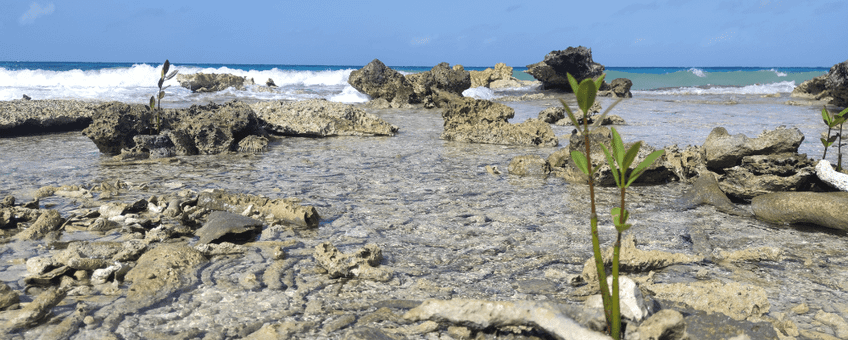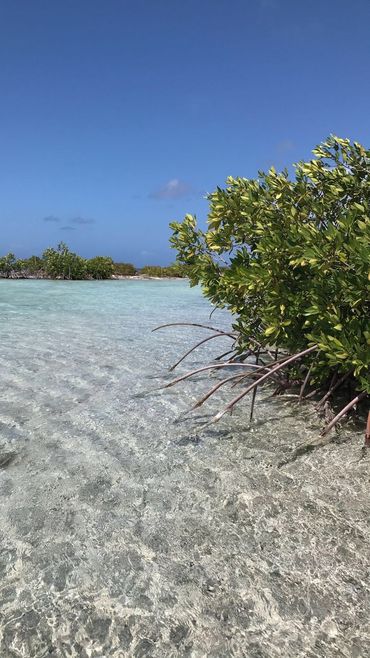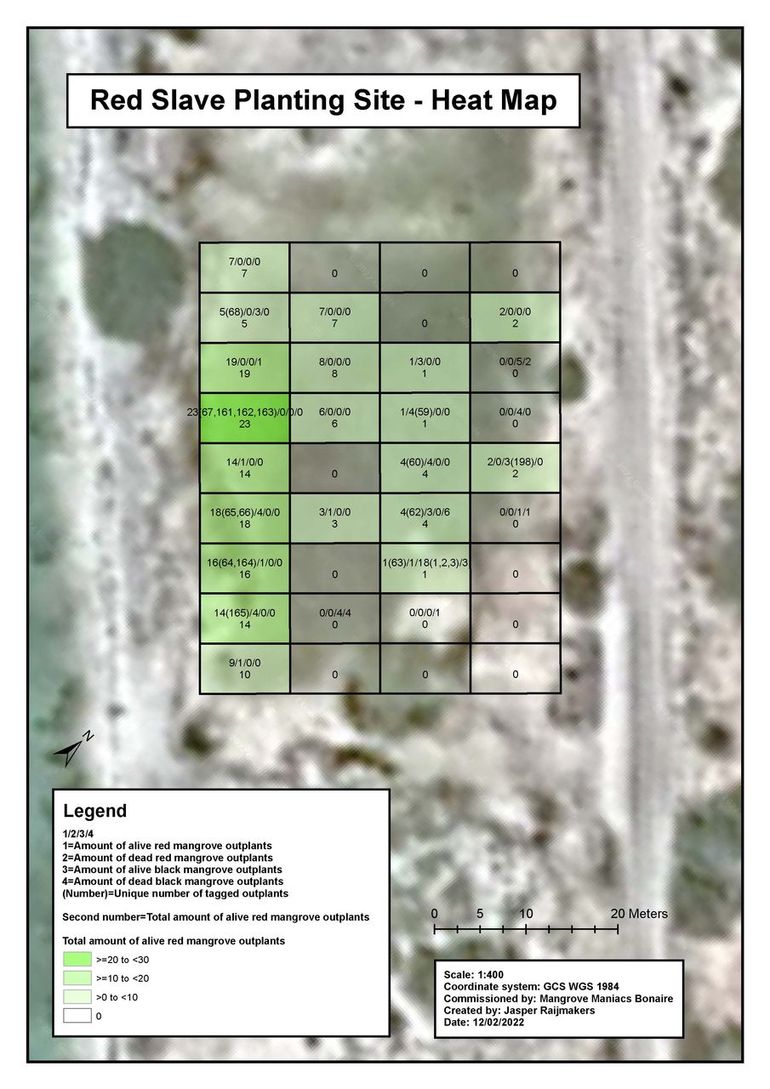
New research on mangrove restoration for Bonaire
Dutch Caribbean Nature Alliance (DCNA)Importance of magroves

Worldwide, mangroves become more important every day due to the threats of climate change and sea level rising. Unfortunately, Bonaire is no exception to these threats. Mangroves provide multiple ecosystem goods and services (EGS). One of the main EGS is coastal protection due to their ability to attenuate waves, prevent erosion and increase sedimentation. Furthermore, they are important for their ability to store blue carbon, carbon stored in coastal and marine ecosystems. Mangroves sequestrate and store more carbon per unit area than tropical rainforests because of their woody prop roots and dense above and belowground biomass. Also, they have a high biodiversity, serve as a fish and bird nursery, and provide opportunities for ecotourism.
Research
Recently, Jasper Raijmakers, an undergraduate from the International Forest and Nature Management program of Van Hall Larenstein University of Applied Sciences, worked with the Mangrove Maniacs to map and monitor the planting sites along the southwest coast, as well as to compare and evaluate two mangrove restoration techniques. For all large planting sites, the numbers of alive, dead and tagged red and black mangrove outplants were counted in a grid and presented in a heat map (an example can be seen below).
To compliment the maps, the success rate of the standard outplanting mangrove restoration technique was compared against the thesis work of student Shamyi Lanjouw, a WUR MSc Forest and Nature Conservation student. She conducted her thesis on mangrove restoration with the use of BESE-elements®. BESE-elements® are biodegradable 3D structures that offer structural stability for intertidal vegetation. Interestingly, using both techniques found high survival rates. Statistically speaking there was no significant difference between the relative growth rates between the two methods. The implications of this show that, in this particular case, investing in additional restoration material is not more effective than using traditional methods.
Impact on the future
These maps will be a vital management tool for mangrove restoration in the future. Using these maps, land area managers can quickly access an overview of the large planting sites, as well as getting information needed to support monitoring of the outplants, track the project’s progress, and aid in identifying future planting sites. In addition, these maps will provide helpful visuals for publications and social media of the Mangrove Maniacs. A healthy fringing mangrove forest will provide the first line of coastal defense along the southern wetlands. Buffering against rising sea levels, worsening storms and erosion, these mangroves will protect the fragile salt pans and lakes located throughout the south. Furthermore, by providing a physical buffer between land and sea, this will also help mitigating human pressure along the south, and serve to protect the iconic nearshore coral reefs within this area.

More information
- The thesis of Shamyi Lanjouw, Wageningen University and Research, 2022: Testing a biodegradable engineering product for mangrove restoration along a high wave-energy coastline.
- The thesis of Jasper Raijmakers, Van Hall Larenstein, University of Applied Sciences, 2022: Map mangrove planting sites and compare and evaluate mangrove restoration techniques.
Text: Dutch Caribbean Nature Alliance, Jasper Raijmakers and Shamyi Lanjouw
Pictures: Jessica Johnson; Jasper Raijmakers
Figure: Jasper Raijmakers
